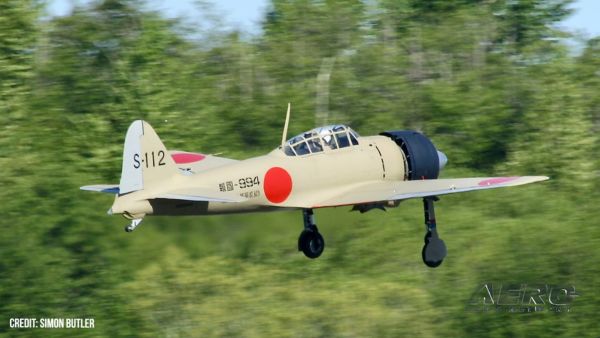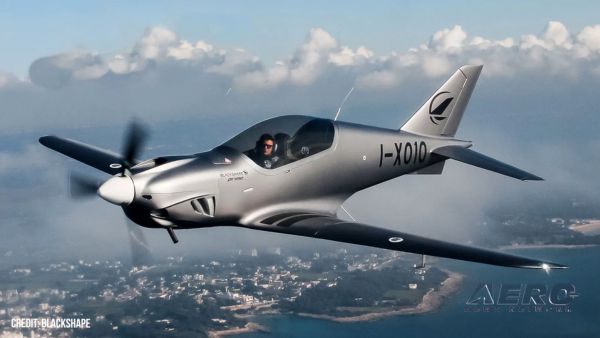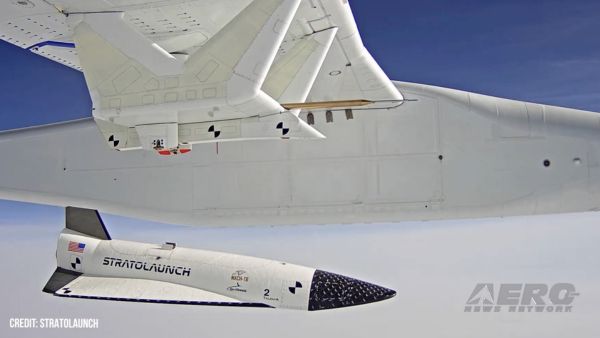Amazing Technology Now Being Fielded Worldwide (Part III)
By ANN Correspondent Kevin "Hognose" O'Brien
Modular Cockpits
If your nation operates
multiple combat aircraft, a single G-FET-II can train all the
crews. One very neat feature of the GFET-II was the modular
cockpits. In an hour mechanics can loosen a few bolts. Then the old
cockpit is winched out a hatch, and a new one lowered in. A couple
of modular plugs are connected, the same bolts are tightened, and
the air data model for the new aircraft is loaded in the computer
system.
This initial machine, which is bound for Malaysia, has cockpits
for that nation's combat aircraft: the F/A-18D, the MiG-29, and the
Hawk Mk-208. Each cockpit has the correct seat angle, control
stick, throttle, and pedals, as well as the correct instruments.
The HUD is projected on the viewscreen.
As you can imagine, the G-FET-II must be preflighted, like a
real aircraft. It might not be a "real" airplane but it produces
real-airplane levels of acceleration, and there's always that
million pounds of torque to consider - you really don't want your
body in between that torque and its intended destination. One of
the things you check during preflight is the presence of those
bolts!
While I liked the versatility of the multiple-aircraft-cockpits,
there's another reason that the gondola's cockpit can be
interchanged. In normal use, the G-FET-II provides video (3 live
camera feeds) and whatever physiological data that the customer
requires. The pilot can be instrumented for heart rate, brain
waves, skin perspiration, O2 saturation, basically anything modern
science can imagine plugging a pilot into. That means that a simple
change of modules can provide a cockpit that is oriented not to
pilot training but to instrumented scientific or aeromedical
research. This means that a single G-FET-II can do double duty as a
pilot-training simulator and a research centrifuge.
The bold red trace (above) shows the acceleration experienced on
one of Glenn's flights. The horizontal line is a limit that can be
set (in this case at 6.5 or 7G) by simulation controllers. The
machine won't exceed this limit. Another screen captures
physiological data, another shows loads on the electric motors, and
another shows the pilot on video in real-time.
Uses for the G-FET II
Obviously, most customers will use this for aircrew training,
but a few other ideas come to mind as well. It could be a
worthwhile part of an aircrew selection program. After all,
training is expensive; it's not too hard to imagine ways that the
centrifuge can be used to help narrow down the many volunteers for
flightcrew duty to those that are most likely to complete the
program.
It would be possible for multiple G-FET-II devices to be
interconnected to make a hellishly realistic - but economical,
compared to live 1 v. 1 or many v. many flights - air combat
simulator. This also enables the training of combat profiles that
are risky to fly in peacetime conditions, for example, low-level
ingress/egress in mountainous territory.
Strike leaders could in some circumstances use a device like
this to "fly" a critically important mission before the execution
order is given - to assure that there are no glitches in the plan,
to compare prospective courses of action, or simply for the
rehearsal value - but this would require, one thinks, quite a wide
distribution of these machines.
I've already mentioned its possible use in research and
development. But it might also be useful to R&D some combat
tactics. You can do things, like flying to the brink of G Induced
Loss of Consciousness (G-LOC), that would be foolish in an actual
aircraft. For instance, it's not too hard to imagine a G-FET-II or
a successor device, programmed with data models for US and Allied
aircraft, to also be programmed with the flight envelope of a new
enemy SAM or AAM, so that effective evasive measures can be
developed.
Of course, someone's
going to suggest that it would be a great amusement park ride,
although a bit pricey. Well… ETC is miles ahead of you.
Leveraging much of the same technology, ETC developed the Mission:
Space theme park ride in cooperation with Disney World (the
cooperation has gotten a bit sticky, with the two parties currently
entangled in a widely publicized breach-of-contract suit). The
Mission: Space ride has some differences, dictated by its use as a
theme park entertainment for ordinary people. It has multiple arms
on each of its four centrifuges; it makes a lot fewer Gs than a
training device for fit, young military pilots, and it flies a
canned "mission profile" rather than respond to user control. But
the essential concept of acceleration forces ("G") delivered by a
centrifuge in tight coordination with visual and aural cueing, to
create the most realistic simulated environment possible, is
identical.
What's Next?
While the G-FET-II stands at the apex of ETC's flight simulation
devices today, nobody at ETC looks ready to rest on his laurels.
This device is likely to sire many offspring. Customers come with
their own ideas, and ETC's international staff is already brimming
with new concepts.
One thing that is very likely is a machine that supports 2-seat
cockpits for crew training (some side-by-side 2-seater pits could
probably fit in the present gondola).
To ETC, the potential for more realistic flight training - what
the company calls Tactical Flight Simulation - is obvious, and the
company will be working hard to develop and sell these machines.
Then comes the integration of multiple such machines. The
technology is in place, only the customer has been lacking.
If You Can't Afford the Centrifuge, what then?
By now you're absolutely convinced that the ETC G-FET-II is the
ultimate flight simulation device. But your wife caught you digging
the ten-meter deep hole in the garden and now she won't let you
spend the tens of millions it will take to complete the
installation. Yep, money is definitely a requirement when you want
to buy this sort of machine.
I'm half afraid that my readers will call bait-and-switch on me
for mentioning some of ETC's panoply of other simulation devices,
but unless you have a whole lot of people whose bosses' bosses call
you "Boss," you probably can't order up a G-FET-II.
For the flight training
market, ETC has some intermediate-sized centrifugal simulators
under development. One of the more interesting possibilities is the
use of an ETC centrifuge for upset training. Aero-News has in the
past covered the Upset Domain Training Institute, headed by Donald
W. Baggett, a flight instructor and retired Naval Aviator. Don
plans to use an ETC GL-1500 two-seat centrifugal simulator to
explore parts of the flight domain where you just can't go in a
real airplane; he'll also have a GAT-II. (If you're a regular
Aero-News reader you know we've been looking at a lot of upset
training lately). We'll keep you posted on progress of the UDTI,
which is a subsidiary of ETC, but you can start with a presentation
that Don has prepared at www.etcupsetrecovery.com.
So, there should be before too long places that civilians can
get instruction in centrifugal simulators. And for those that would
operate a simulator, the G-FET-II has many siblings that trade some
capability off for increased affordability.
To be continued...
 ANN's Daily Aero-Linx (05.06.25)
ANN's Daily Aero-Linx (05.06.25) ANN's Daily Aero-Term (05.06.25): Ultrahigh Frequency (UHF)
ANN's Daily Aero-Term (05.06.25): Ultrahigh Frequency (UHF) ANN FAQ: Q&A 101
ANN FAQ: Q&A 101 Classic Aero-TV: Virtual Reality Painting--PPG Leverages Technology for Training
Classic Aero-TV: Virtual Reality Painting--PPG Leverages Technology for Training Airborne 05.02.25: Joby Crewed Milestone, Diamond Club, Canadian Pilot Insurance
Airborne 05.02.25: Joby Crewed Milestone, Diamond Club, Canadian Pilot Insurance


